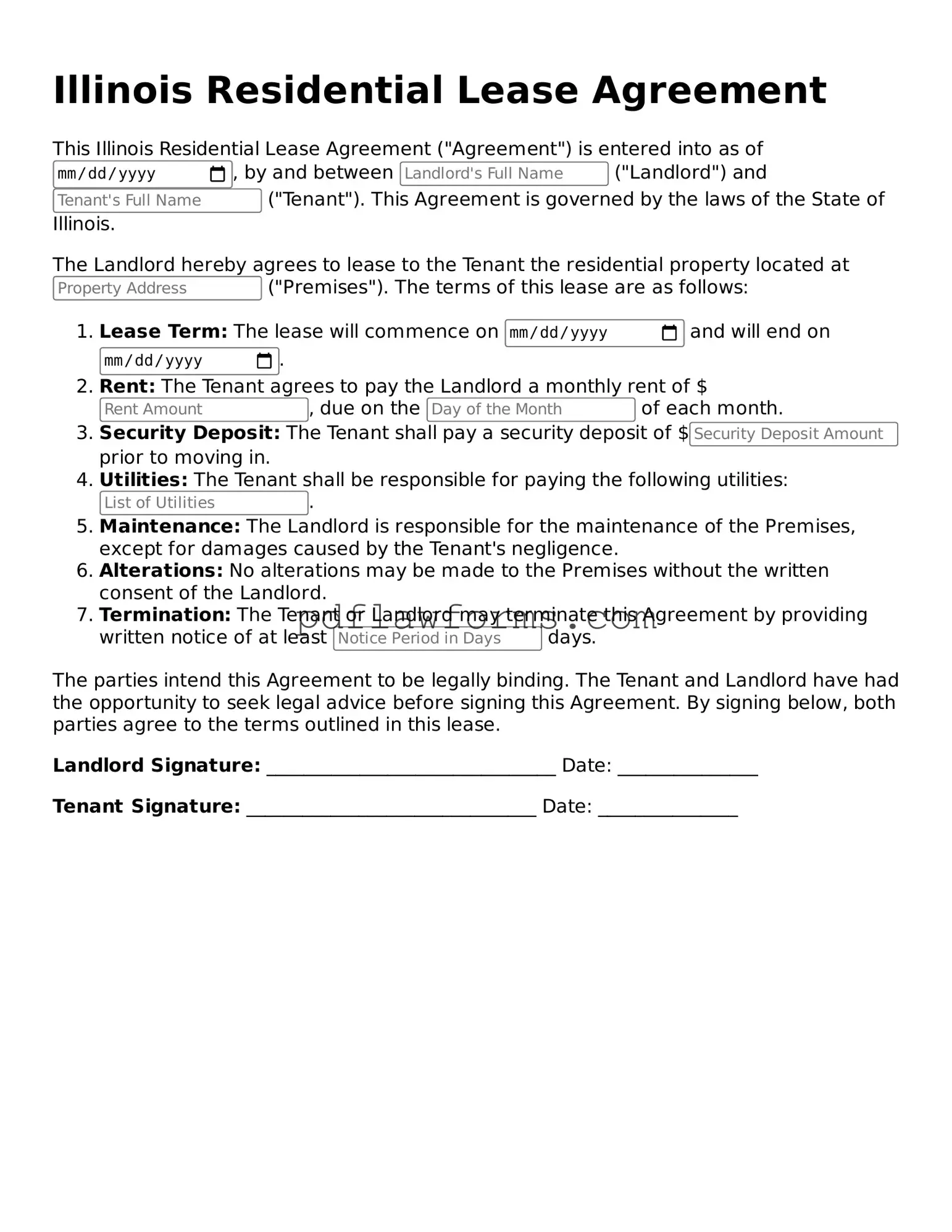Filling out the Illinois Lease Agreement form can seem straightforward, but many individuals make common mistakes that could lead to complications down the line. Understanding these pitfalls is crucial for both landlords and tenants. Here are ten frequent errors to avoid.
One of the most common mistakes is failing to include all required information. This includes the names of all tenants and landlords, the property address, and the rental amount. Omitting even one detail can lead to confusion and potential disputes later. Always double-check that every section is completed accurately.
Another frequent error is neglecting to specify the lease term. Whether it’s a month-to-month agreement or a fixed-term lease, clarity is essential. Without a defined duration, both parties may have different expectations about the length of the tenancy, which can result in misunderstandings.
Many people also forget to outline the security deposit terms. It’s crucial to state the amount of the deposit, the conditions for its return, and any deductions that may apply. This information protects both the landlord’s and tenant’s interests and helps prevent conflicts when the lease ends.
Inadequate communication about maintenance responsibilities is another common mistake. Both parties should clearly understand who is responsible for repairs and upkeep. If these responsibilities aren’t explicitly stated, it can lead to disputes over who should handle maintenance issues.
Some tenants and landlords fail to include specific rules regarding pets. If pets are allowed, it’s essential to outline any restrictions or additional fees. Conversely, if pets are prohibited, this should be clearly stated to avoid any misunderstandings.
Ignoring the inclusion of utilities can also create issues. It’s important to clarify which utilities are included in the rent and which ones the tenant is responsible for. This transparency helps avoid surprises when bills arrive.
Another mistake is not discussing the consequences of late payments. The lease should specify any late fees and the timeline for when these fees apply. Clear terms can help maintain a healthy landlord-tenant relationship by setting expectations upfront.
Many individuals overlook the importance of including a clause about lease termination. Outlining the conditions under which either party can terminate the lease helps protect everyone involved. This clause can prevent potential legal disputes in the future.
Failing to sign the lease is a surprisingly common oversight. Both parties must sign and date the document to make it legally binding. Without signatures, the lease may not hold up in court if disputes arise.
Lastly, people often forget to keep a copy of the signed lease. Having a copy is vital for both parties, as it serves as a reference point for the terms agreed upon. This simple step can save a lot of headaches later on.
By avoiding these ten mistakes, landlords and tenants can create a smoother leasing experience. Taking the time to ensure that every detail is correct can prevent misunderstandings and foster a positive relationship.
